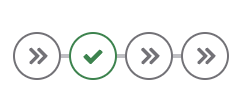
圖片來源:https://www.gliyao.com/57/為什麼導入-gitlab-ci
.gitlab-ci.yml 就是讓你撰寫要使用測試腳本的地方
GitLab CI Runner 是為你代勞執行 CI Job 的 Worker,會依照 Gtialb-ci.yml 設定檔案來啟用 Runner,確認每一個 Job 執行完之後,且無任何錯誤,才能在 gitlab 頁面上合併分枝。
以下是官方提供的示意文件
// 定義不同的階段,以及相對應的工作(jobs)
stages:
- build // 先執行 build
- test // 後再執行 test
build-code-job:
stage: build
script: //這個 job 裏包含了哪些要做的事情,至少要包含一個執行的工作
- echo "Check the ruby version, then build some Ruby project files:"
- ruby -v
- rake
test-code-job1:
stage: test
script:
- echo "If the files are built successfully, test some files with one command:"
- rake test1
test-code-job2:
stage: test
script:
- echo "If the files are built successfully, test other files with a different command:"
- rake test2
另外,在設定腳本時,也有些 keywords 可以參考:
**variables**
variables: #CI/CD 會使用到的變數
DEPLOY_SITE: "https://example.com/"
deploy_review_job:
stage: deploy
variables:
REVIEW_PATH: "/review" #另外指定了要部署的特定路徑(path)
script:
- deploy-review-script --url $DEPLOY_SITE --path $REVIEW_PATH
environment: production
**要在正式 script 執行前或後就要先完成的設定**
.preset:
before_script:
- echo "It's before script time"
after_script:
- echo "It's after script time"
**image**
# 再執行 CI/CD 時需要先有如 php、composer、npm的等容器,
# 若一開始沒有安裝相關的工具,你也可以自定義要指定使用的容器。
manual:
stage: manual
when: manual
tags: #List of tags that are used to select a runner
- docker
image: #Use Docker images
逐步建立完之後, 在 gitLab 上的 pipeline 就會根據上述流程來進行。
在 gitLab 上的 pipeline 就會根據上述流程來進行。
接下來,我們就要動動手來實測一次 gitLab Pipeline啦!
參考文章:
